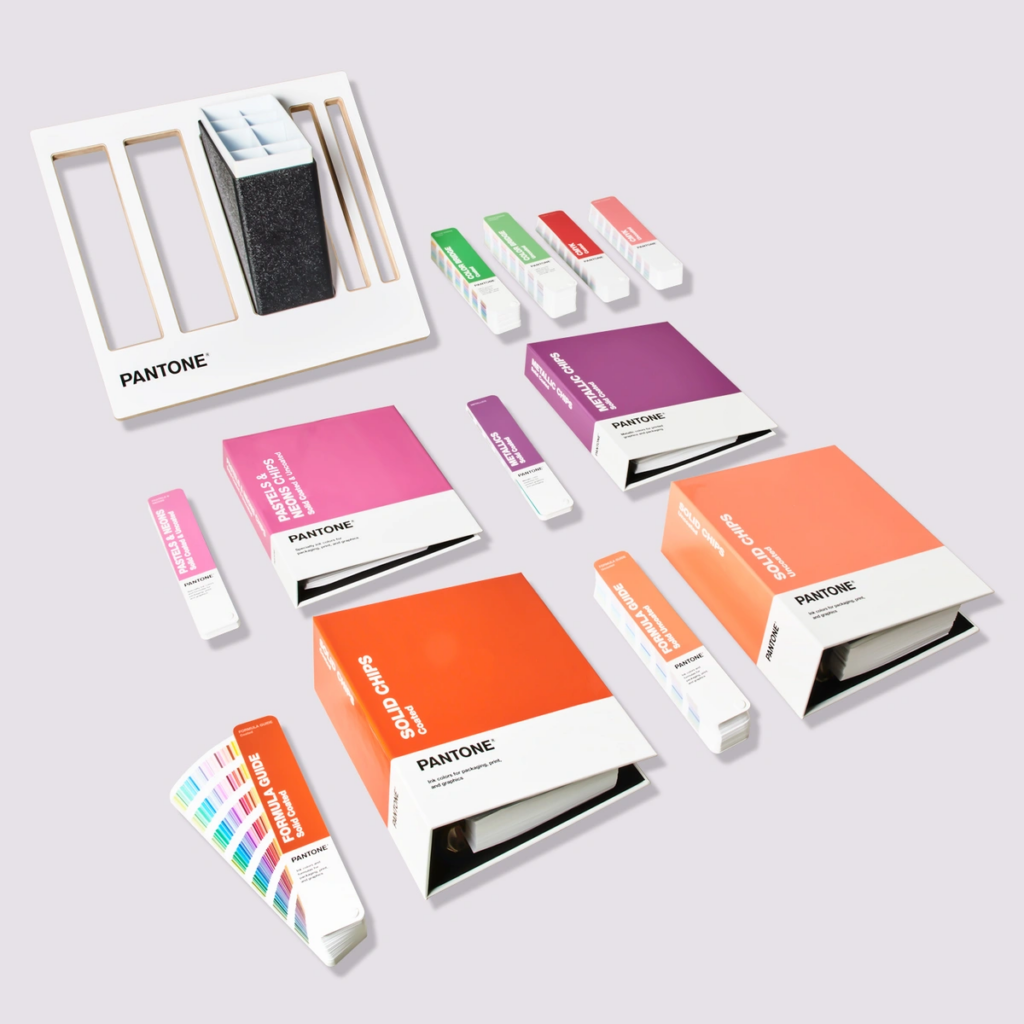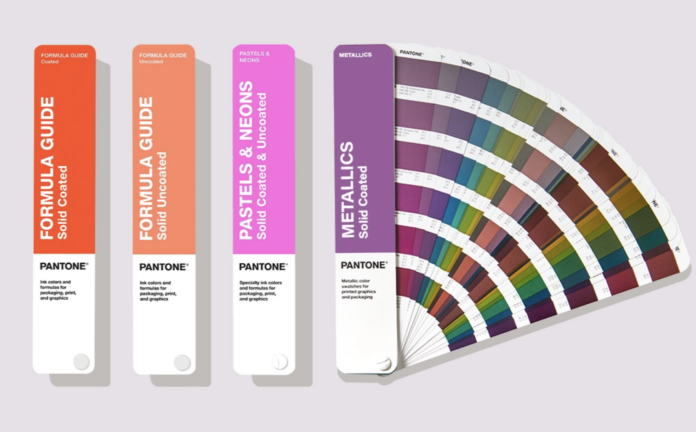What does it mean to set a standard, and is it reasonable to ask people to spend thousands to stick to it? This podcast from NPR’s “Planet Money” looks at the history and recent action taken by Pantone that requires users of Adobe Creative Cloud to pay to utilize its color library. A shift into a new business model meant big changes for designers, printmakers, fabric dyers, clients, and the entire color industry. It was shocking to many just how much Pantone set the standard for color matching.
Larry’s son Richard spoke to the hosts of the podcast,
“YELLOWHORSE KESLER: And Richard tells us that back in the 1960s, his dad, Larry, worked at a printing company, making brochures and signs and posters. And he noticed this issue – it was really hard for people to talk about color. If some client wanted a certain shade of blue for their poster or magazine ad, they would have to actually send a sample of the color.
HERBERT: You know, our famous thing was to cut a piece off their tie and send it into the print and say, match this color. And then every time they had to match that color, it would be custom mixing. They had their own ink formula books, and they could get close. But it was very random.
GUO: And not just ties. People would hand Larry the wildest of references. Like, here’s a piece of a vase. Can you match that color? Or maybe this leaf from my backyard” (Kessler et al., 2024)
Hubert responded to these requests with an idea that revolutionized the industry – establishing color recipes and cataloging them. These recipes became known as the Pantone system, launching a company that now makes millions off of its color catalogs and their licensing.
“SEMPLE: The way to think about Pantone is it’s a language. So if I say cat to you, you can picture a cat. So if I say 249 C – and you can open your book and look up 249 C, and I can open my book and look up 249 C. We’re talking the same language. We’re talking about exactly the same color” (Yellowhorse Kessler et al., 2024).
This “language” is what allows designers, printers, and manufacturers to know exactly what color their clients want in their final products. Hubert’s strict standards of color mixing and cataloging allowed him to set the industry standard after decades of working his way up from Mom-and-Pop print shops to companies like Netflix and Disney who use their services today. However, use of the Pantone comes at a pretty hefty price tag for manufacturers, with one Pantone book costing $3,000 brand new.

“YELLOWHORSE KESLER: Bigger, fancier versions, like the ones that include a set of plastic chips. Those go for $9,000.
DRANKWALTER: They’re very expensive. It is a lot to keep having to buy new ones all the time.
YELLOWHORSE KESLER: See, it’s not enough to just buy a set once. Pantone says the colors will fade over time, and they’re always adding new colors, new codes. But Christian says you can’t run a color business without the Pantone colors
…
GUO: … [T]his was an ugly reminder of just how much power Pantone wielded because it owned the standard, and it could turn it off whenever.” (Yellowhorse Kessler et al., 2024).
References
Pantone. (n.d.) Reference Library [Photograph]. https://www.pantone.com/products/graphics/reference-library
Pantone. (n.d.) Solid Guide Set – Formula Guide Coated & Uncoated, Pastels & Neons Guide, Metallic Guide [Photograph]. https://www.pantone.com/products/graphics/solid-guide-set
Yellowhorse Kesler, S., Guo, J., Jiang, J., Rubin, W. (Hosts). (2024). The company that owns colors [Audio podcast transcript]. In Planet Money. NPR. https://www.npr.org/transcripts/1197961103




